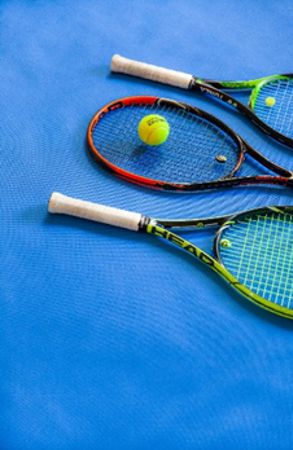Wimbledon 2022 has come and gone. There were talking points aplenty – Ons Jabeur of Tunisia came close to winning the women's singles title, the spectator who managed to get herself ejected from Centre Court for having "700 drinks", and, of course, bad-boy Nick and his unlikely bromance with Novak.
But where's the IP you ask? Well, when it comes to Wimbledon there's a great deal of it.

(Alicia-Gancarz)
The EUIPO posting
Kudos to the European Intellectual Property Office ("EUIPO") for effectively using the Wimbledon tournament as an excuse to get the IP message out there – the EUIPO posted an interesting note on some of the IPs that can be linked to the tournament. posting that:
- Wimbledon is the world's oldest tennis competition and the most active tournament in the context of IP. The organisation behind Wimbledon, the venerable All England Lawn Tennis Club ("AELTC"), has filed 13 EU trade mark applications since 1996.
- There are many trade marks associated with Wimbledon, including the name of the tournament, the logos and the colours (green and purple).
- The players who take part in Wimbledon have their own IP too, with players being particularly keen on brands. Raphael Nadal is a great fan of trade marks and is the proud owner of eight EU trade marks ("EUTMS"). Other big hitters include men's champion Novak Djokovic (four EUTMS), Maria Sakkari ((no, me neither, but she apparently has four EUTMS), and Stefanos Tsitsipas, who has one EUTM. There is also a EUTM registration for the name Emma Raducanu in the name of a company.
- Leaving aside the trade marks of the AELTC and the players, there are many other trade marks on show at Wimbledon – these are for tennis balls, shoes, and rackets among other things.
- There are always many fashion trade marks that are relevant to tennis on show at Wimbledon. There are, for example, EUTM registrations for the names Fred Perry and Lacoste, the latter having been founded by the French player Rene "the crocodile" More recent players like Roger Federer, Andy Murray, and Serena Williams also have their own fashion lines, and they too have EUTM registrations.
As for designs, there may well be design protection for clothes, rackets, and footwear
- There are patents protecting some of the technology that's used at Wimbledon, such as Hawk-Eye.
There's a great deal of creative work created by photographers and video producers, and this work is often protected by copyright.
It turns out that people have been writing about Wimbledon's trade marks for some time. In 2015, Sarah Comstock published an article entitled where she wrote about the fact that the AELTC is trade mark-savvy, in that it has a "remarkable 27 registered trade marks in the UK alone...the first of these was registered in 1884 and is still in force today."
Comstock went on to say that "it's not just Wimbledon that flaunts their trade marks during the tournament." There are all the official suppliers – "Slazenger has had a long successful relationship with the club since 1902.. likewise, Robinsons, has had an association with The Championships since 1935 with their Lemon Barley Water which is the official still soft drink...and of course, other trade marks and labels can be seen from the player's multiple sponsors."
Comstock then turned to the fact that Wimbledon has a large TV audience. Armchair tennis fans are bombarded with "established brands which are effortlessly identified in the blink of an eye by their registered trade marks."
In a recent article on trade marks in sports, the author says:
"For the official sponsors of the Wimbledon tennis tournament who pay large sums to be associated with the celebrated name, it is essential that the Club has sufficient trade mark protection."
The authors' talk of the importance of trade mark protection She discusses the fact that the AELTC has trade mark registrations for the word trade mark, the crossed rackets logo, and the green and purple colourway. The colourway has been in use since 1909, yet it was only registered in 2016, before then the AELTC would have had to rely on unregistered rights (passing off to prevent unauthorised usage of the colourway. In order to get the registration for the colourway, the AELTC submitted evidence of extensive usage going back some 100 years.
This article is intended as a reminder to all those involved in sport – sportsmen and women, teams, clubs, sponsors, and event organisers- to consider their IP carefully and make sure that it is protected and licensed. ENSafrica boasts a dedicated sports IP team that is well-versed in advising clients in the sports industry.
The content of this article is intended to provide a general guide to the subject matter. Specialist advice should be sought about your specific circumstances.


